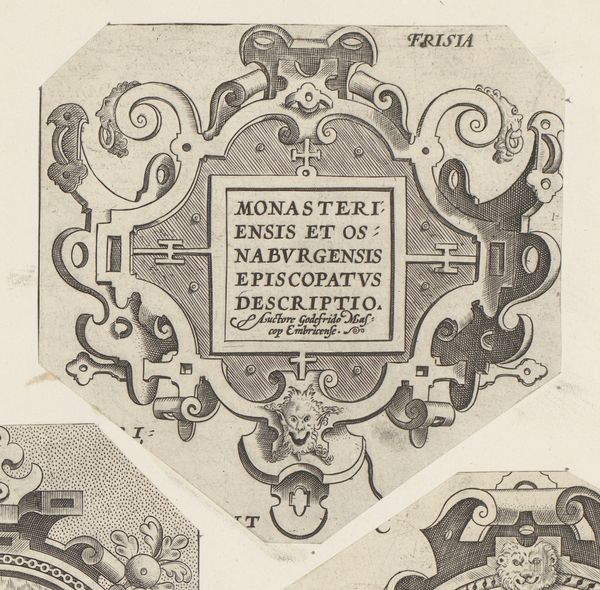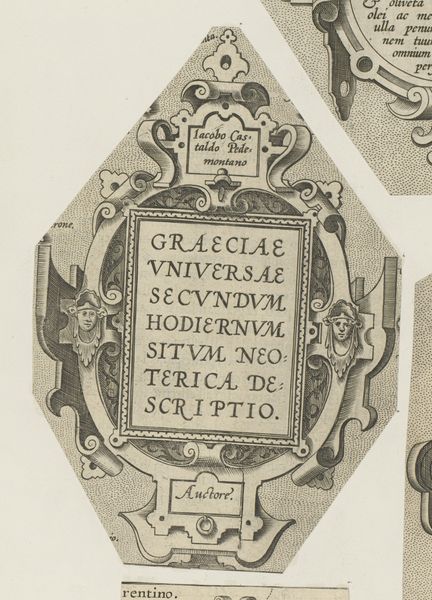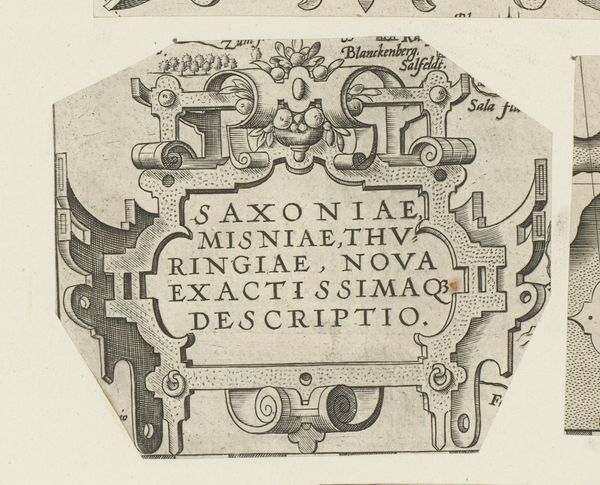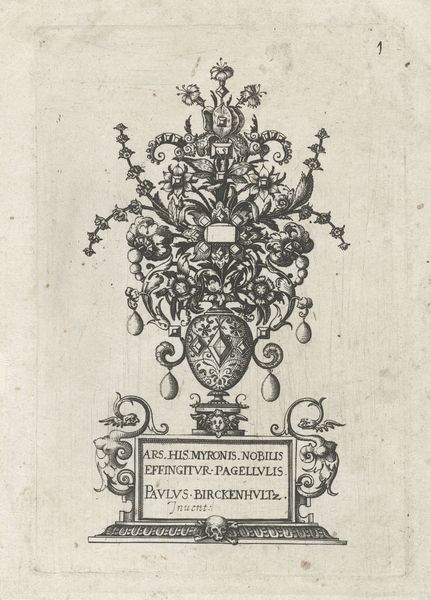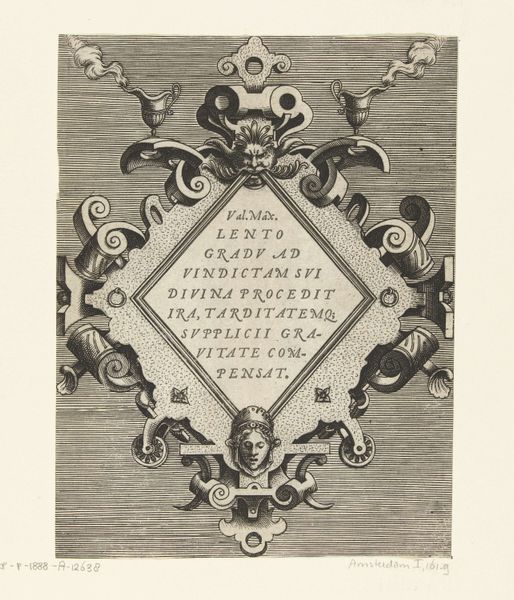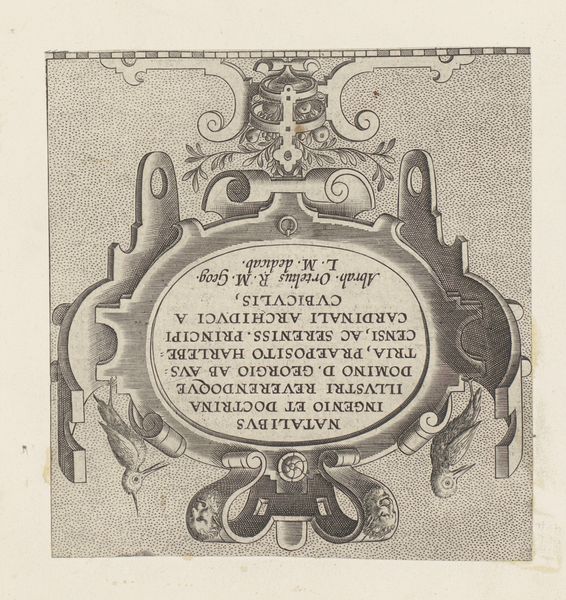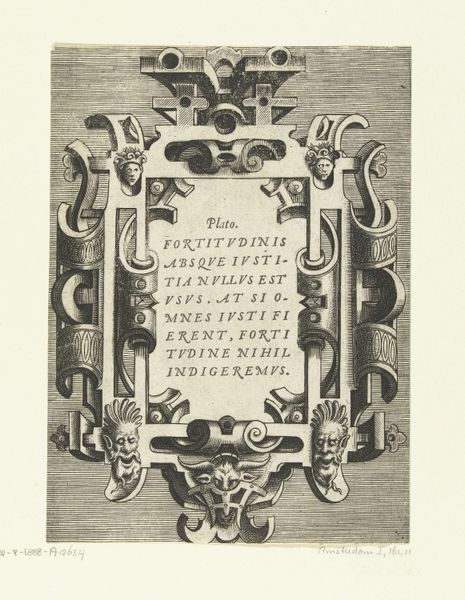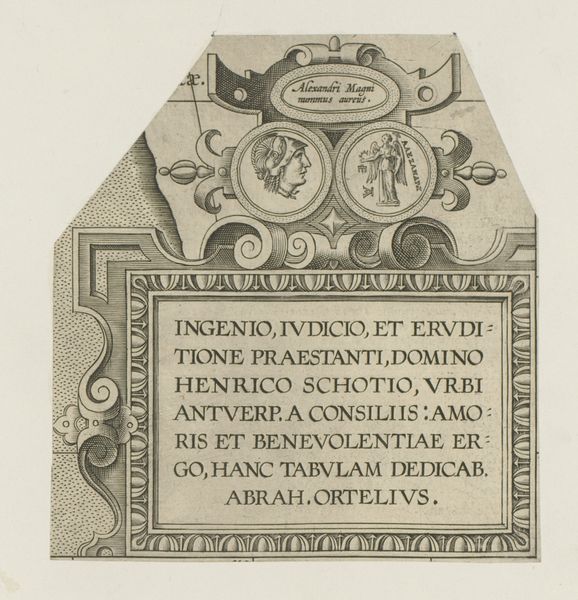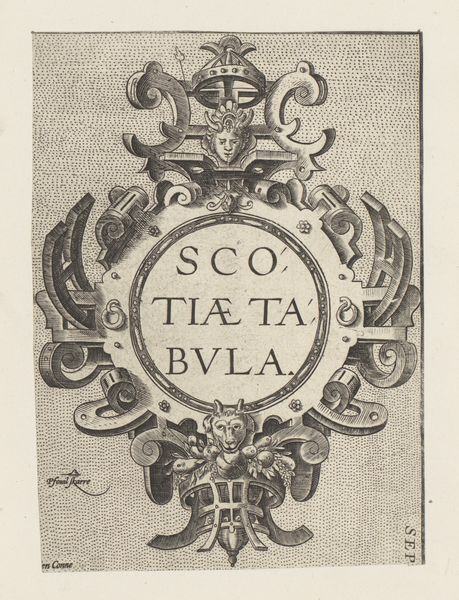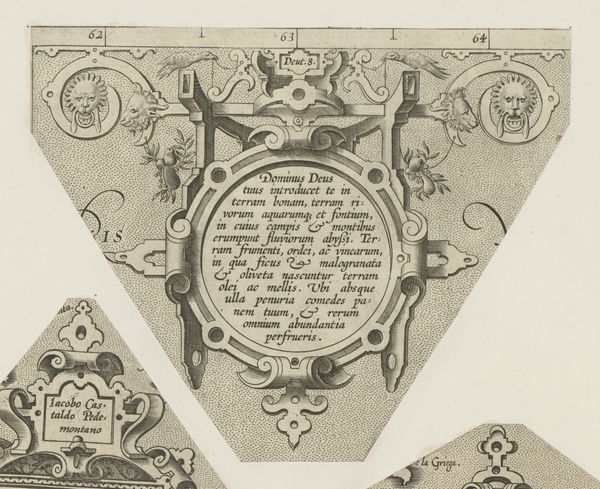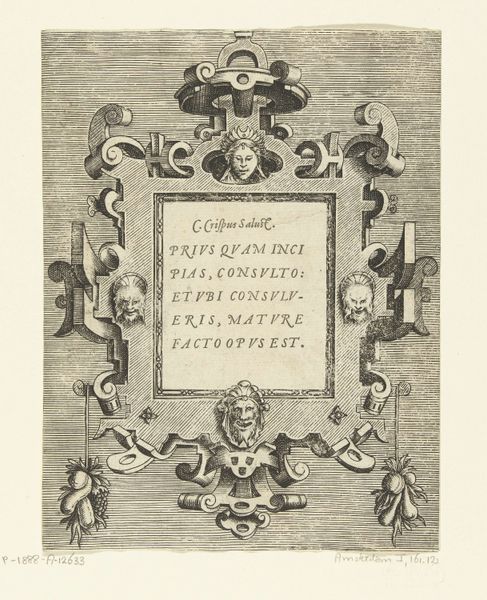
graphic-art, print, engraving
#
graphic-art
# print
#
old engraving style
#
form
#
11_renaissance
#
geometric
#
line
#
northern-renaissance
#
decorative-art
#
engraving
Dimensions: height 170 mm, width 131 mm
Copyright: Rijks Museum: Open Domain
Curator: Here we have an engraving from the late 16th century, sometime around 1579 or 1580. The Rijksmuseum refers to it as "Cartouche with two vases of scrollwork." The creator is, alas, anonymous. Editor: It strikes me as incredibly ornate, almost aggressively so. The line work is so detailed, it’s bursting with tiny decorative flourishes. You wouldn’t think something so rigidly geometric could feel so… festive. Curator: I think festive is an interesting choice! What we’re seeing here are the characteristics of Northern Renaissance design spreading across Europe. Ornamentation becomes a means to display status and learning, mirroring broader shifts in publishing and mapmaking. Editor: You can almost feel the engraver's hand at work here, painstakingly carving those incredibly precise lines. The texture… It gives off a cold, metallic sort of tactility. And consider the sheer amount of labor! Curator: Absolutely, the technical skill is undeniable, but remember these prints weren’t just about showing off technique. These served practical purposes; circulating styles, and influencing craftspeople working in various media. Printmaking became an essential tool for disseminating visual ideas throughout society. Editor: It raises the question, what type of workshop was this created in? The process from design, to labor, to print must have involved so many hands and a well oiled infrastructure, for a product like this. Curator: Exactly, these images had clear roles to play in a society that valued refined craftsmanship and geometric forms. Editor: The decorative elements definitely show its purpose, designed more to frame the words in the cartouche than to create its own art piece. So where was this located? Or for what purpose did this exist. Curator: Likely it was part of an atlas, created to highlight a regional map. In doing so the printer had a hand in codifying Westphalia into existence, into public knowledge through its visualization, contributing a vital element of cultural memory. Editor: Understanding the context certainly brings new layers to my reading of the material properties. Now it reads as powerful and delicate. Curator: Yes, seeing this artwork helps to understand how prints shaped visual culture. Editor: It does, seeing the labor and intention behind this cartouche enriches the historical context. Thank you.
Comments
No comments
Be the first to comment and join the conversation on the ultimate creative platform.
